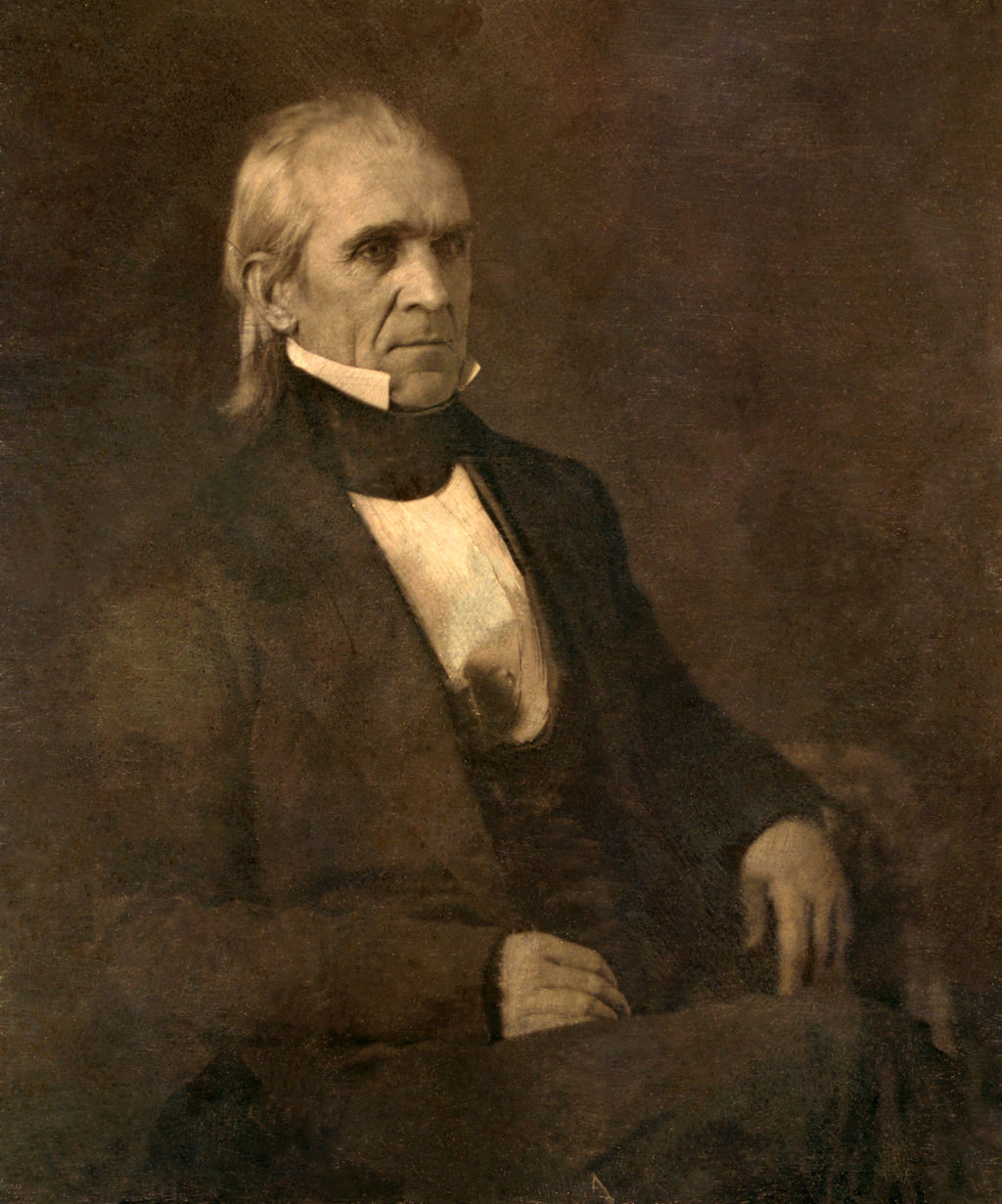Review It
Now review another historical document from the 1840s. As you read, think about whether the speech is organized sequentially, comparatively or in a cause-and-effect format, and how the organization helps you understand the meaning of the document.
After the United Sates was established, several issues became points of debate for presidents. By the mid-19th century, the country had seen the economy both rise and fall during periods of prosperity and panic. Many were relieved that the national debt had been paid following costly wars, but feared it had once again risen and was ruining the economy and government. Political parties were divided over issues surrounding westward expansion and the status of slaves and Native Americans in the new territories. In 1844, James Polk was elected president on an expansionist platform. He favored acquiring land in Mexico and the northwest, but wanted to limit the influence of the federal government on the economy.

President James Polk. Image credit: Matthew B. Brady (original work) & Superwikifan (derivative work) via Wikimedia Commonsopens in new window
Read the following passage taken from President James Polk’s inaugural address on March 4, 1845. Then, review the formats used to organize the passage.
A national debt has become almost an institution of European monarchies. It is viewed in some of them as… essential... Such a system is incompatible with the ends for which our republican Government was instituted. Under a wise policy the debts contracted in our Revolution and during the War of 1812 have been happily extinguished. By a judicious application of the revenues not required for other necessary purposes, it is not doubted that the debt which has grown out of the circumstances of the last few years may be speedily paid off.
In the earlier stages of our national existence the opinion prevailed with some that our system of confederated States could not operate successfully over an extended territory, and serious objections have at different times been made to the enlargement of our boundaries. These objections were earnestly urged when we acquired Louisiana. Experience has shown that they were not well founded. The title of numerous Indian tribes to vast tracts of country has been extinguished; new States have been admitted into the Union; new Territories have been created and our jurisdiction and laws extended over them. As our population has expanded, the Union has been cemented and strengthened. As our boundaries have been enlarged and our agricultural population has been spread over a large surface, our federative system has acquired additional strength and security. It may well be doubted whether it would not be in greater danger of overthrow if our present population were confined to the comparatively narrow limits of the original thirteen States than it is now that they are sparsely settled over a more expanded territory. It is confidently believed that our system may be safely extended to the utmost bounds of our territorial limits, and that as it shall be extended the bonds of our Union, so far from being weakened, will become stronger.
Source: Joint Congressional Committee on Inaugural Ceremonies opens in new window
To read the entire speech, visit this page from the Joint Congressional Committee on Inaugural Ceremonies opens in new window
President Polk’s message may be biased according to his beliefs, and seeks to highlight the positive impacts of previous democratic presidents. He organizes the speech to promote support for his economic and political ideas.
The first paragraph uses a comparative organization to identify the need to eliminate debt. President Polk compares how common debt is in European nations, and claims that this is “incompatible” with the United States government. He uses the comparison to Europe to set the United States apart from these monarchies, who are able to eliminate debt with more authoritarian actions. Compared to the monarchies, debt in the United States is more difficult for a democratic nation to eliminate quickly or easily.
The second paragraph uses a cause-and-effect organization to show the causes of territorial expansion and the positive effects on the nation. Among the causes of expansion are a growing population and agriculture, both of which need space to live and harvest. Polk identifies many positive effects such as the “extinguishing” of Indian tribal lands, the addition of new territories, and the admission of new states to handle the growing population.
The second paragraph also uses a sequential organization to explain the sequence that the nation has gone through during territorial expansion. Starting with the “earlier stages” of the nation, territory was expanded over time with the Louisiana Purchase and through western Indian lands, while new states were acquired. This attention to changes over time helps us understand the positive impacts of westward expansion.
Now that you have reviewed the process for identifying how some primary sources are organized, move on to the Conquer It section.








